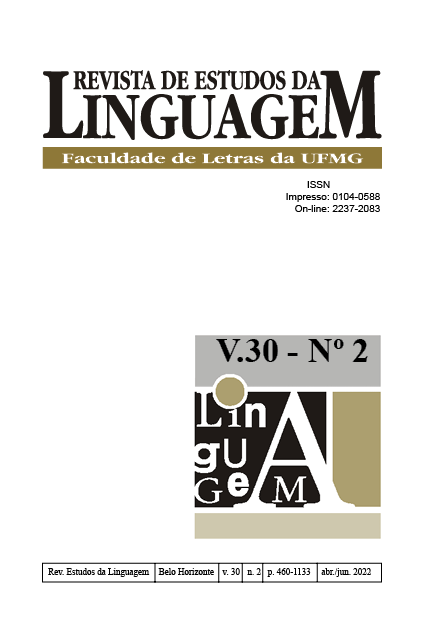A study of constructions with the verb deixar in Brazilian Portuguese spontaneous speech
grammatical/discursive aspects and acoustic analysis
DOI:
https://doi.org/10.17851/2237-2083.30.2.743-779Keywords:
constructionalization, discursivization, deixar, special reduction, acoustic analysisAbstract
This paper analyzes the behavior of the verb deixar in Brazilian Portuguese using spontaneous speech data extracted from the C-ORAL-BRASIL I (RASO;MELLO, 2012) corpus. Considering the multifunctionality of this verb, reported in other studies (cf. PINTO, 2008; TRAVAGLIA, 2017), we sought to observe its occurrences, in order to verify whether its distribution, in spontaneous speech, is equivalent to that found in aforementioned studies, which reported greater productivity of this item as a grammatical verb. In the midst of this discussion, an acoustic analysis of the construction [deixa eu] was carried out in comparison with the third-person form of the present tense, in order to measure the degree of reduction of the construction and verify if it is more reduced from a paradigmatic point of view in relation to [deixa], as can be inferred by Bybee et al. (2016)’s study, and also from a syntagmatic point of view, i.e., in relation to its contiguous words, which would allow to effectively attest its degree of reduction compared to [deixa]. This research revealed that there are more uses of the verb with a discursive function, attested by the construction [deixa eu], followed by the grammatical function and the lexical function. Nevertheless, it was considered that the grammatical function is not rooted in the verb, but in the construction which it participates, which allow us to assume that it goes through a constructionalization process. The acoustic analysis, in turn, revealed that the construction [deixa eu] is, from a syntagmatic point of view, smaller than the form [deixa], which shows that it is at a more advanced stage of change, characterized by its function as a discourse marker.




 Esta obra está licenciada com uma Licença
Esta obra está licenciada com uma Licença 